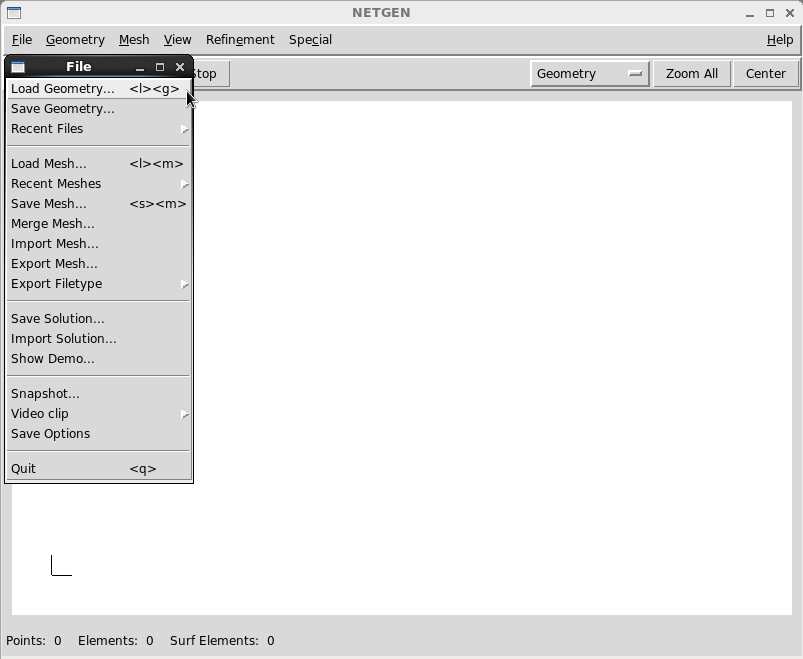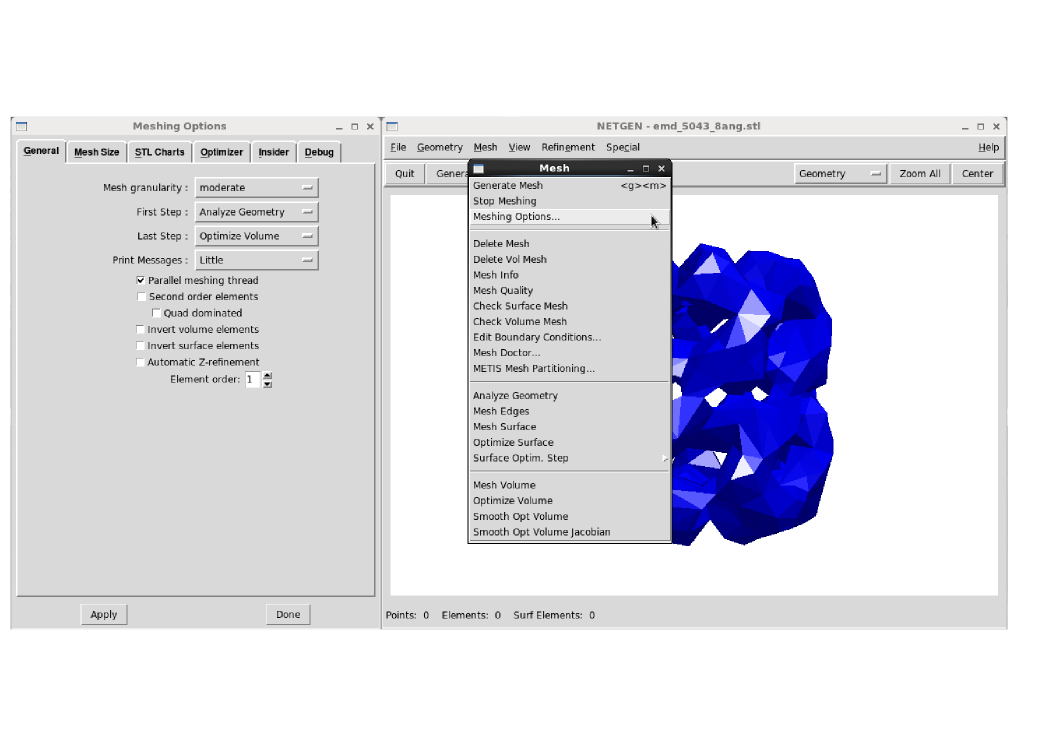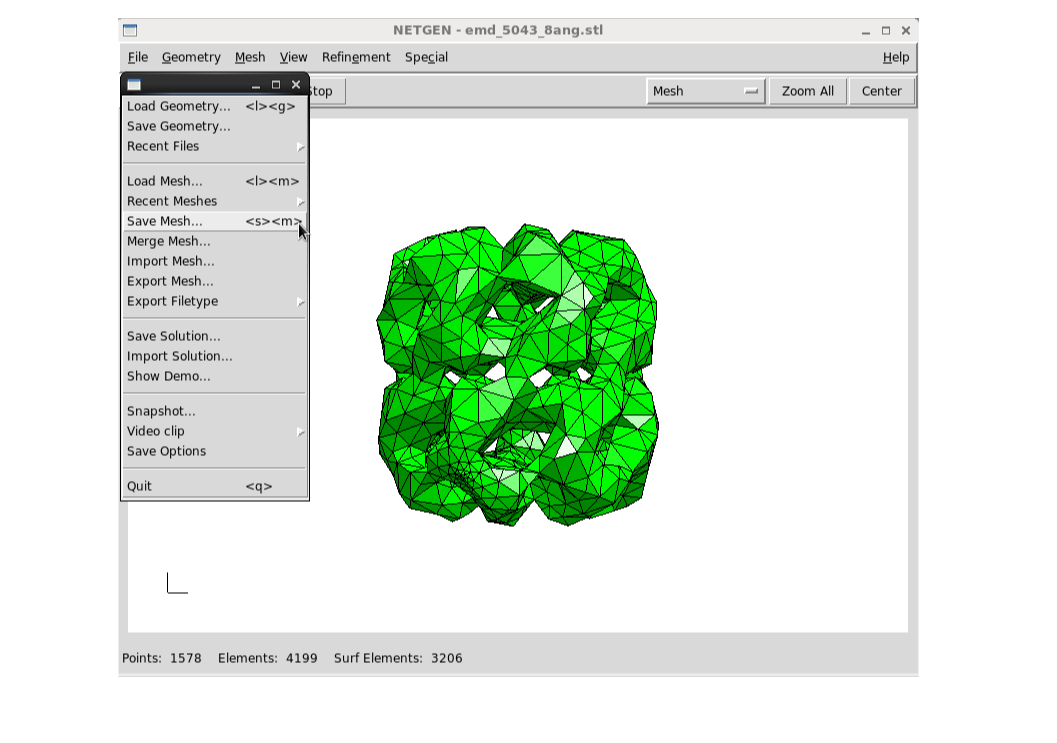Once we have our structure, it is a "simple" matter of filling the surface with tetrahedra. There are many programs designed to mesh a surface, but the FFEA tools will accept output files from NETGEN or TETGEN. In our experience, we found TETGEN to be more stable than NETGEN when dealing with complex geometries. Still, a NETGEN experienced user should be able to sort these issues, specially since NETGEN use TETGEN in its background.
TETGEN Meshing
Meshing with TETGEN is by default a simple command line interface. Its optional flags allow for a good control over the final meshed structure. Still the following will do:
tetgen -Y emd_5043_8ang.stl
As simple as that. The -Y flags keeps the surface structure exactly as it was, ensuring elements are optimised without compromising their lower size limit as much as possible. We now have a series of files; emd_5043_10ang.1.* that contain the volumetric data. We can use these as input to build an FFEA model (skip to the next section), or convert this into the NETGEN .vol format:
ffeatools tettonet -i emd_5043_8ang.1.ele emd_5043_8ang.1.face emd_5043_8ang.1.node -o emd_5043_8ang.vol
so that it visualised with NETGEN.

NETGEN Meshing
Meshing with NETGEN allows for a direct visualisation of the structure as it is being meshed. However, it is a little tricky to install and the meshing options are not at all clear. The process is as follows:
- Open NETGEN
- Load the surface. Click File->Load Geometry... and select a .stl file
- Choose the meshing parameters. Click Mesh->Mesh Options. Vary the mesh granularity for an approximate set of options, or click the Mesh Size tab for more control
- Fill the structure with tetrahedra. Select 'Generate Mesh' and wait until it finishes
- Save the volume file. Click File->Save Mesh... and save the file as .vol (we'll call ours emd_5043_8ang.vol)




The .vol file contains all of the structural information we need to build an FFEA system.

Now we have all of the relevant structural data, all that is left is to convert it into the formats required for an FFEA simulation! Whether you prefer NETGEN or TETGEN is completely up to the you, so long as we are left with a .vol file at the end, FFEA will run perfectly well!
